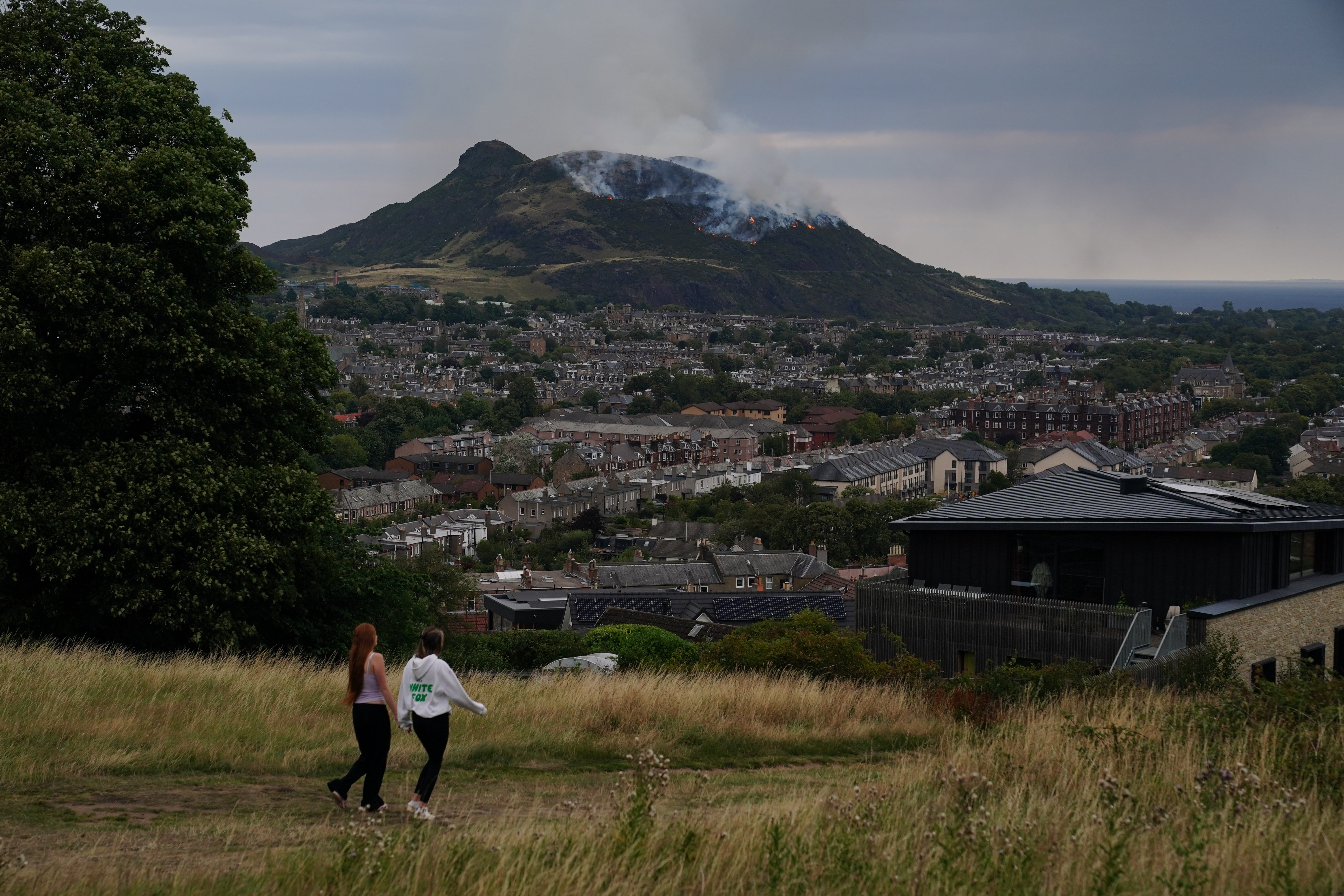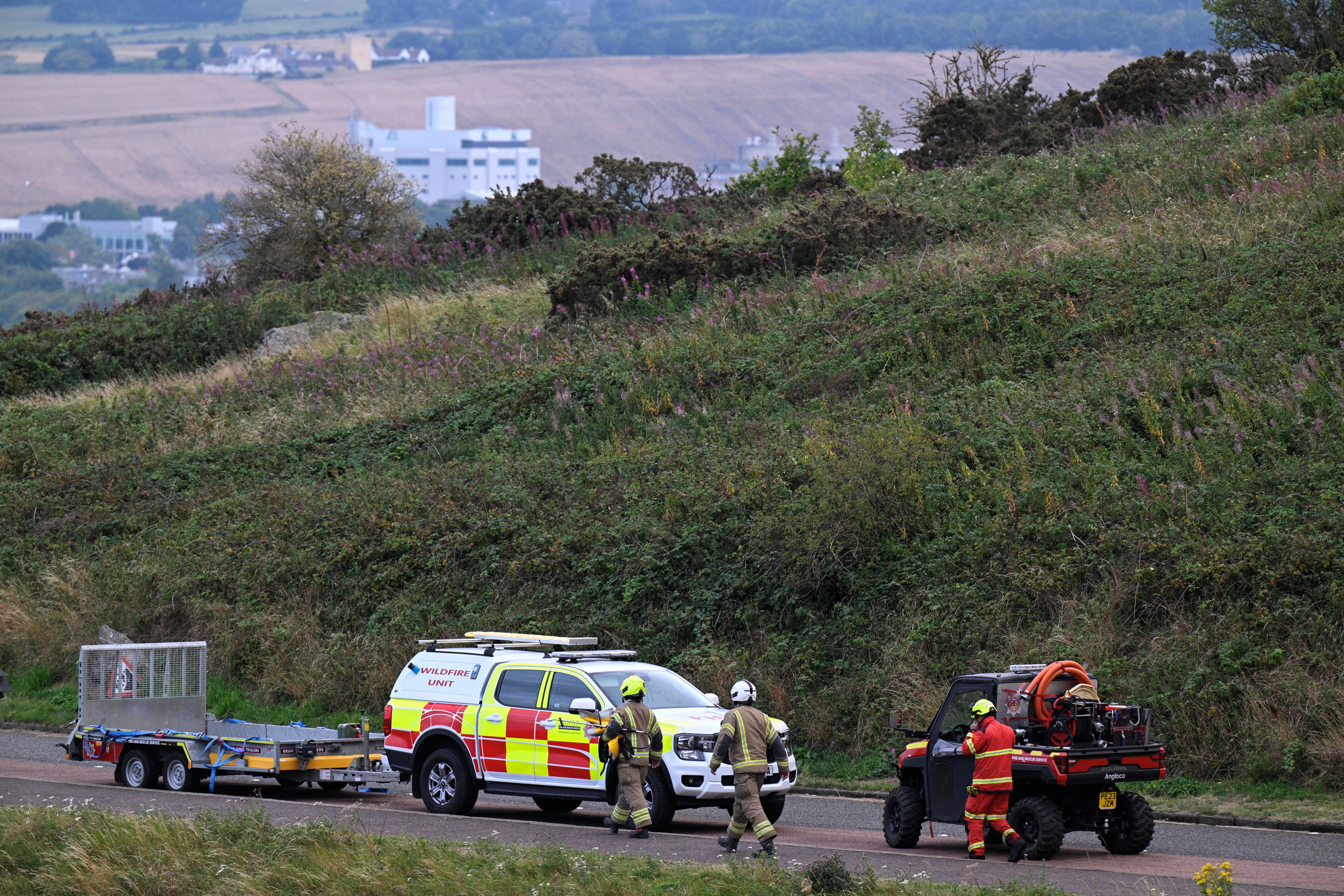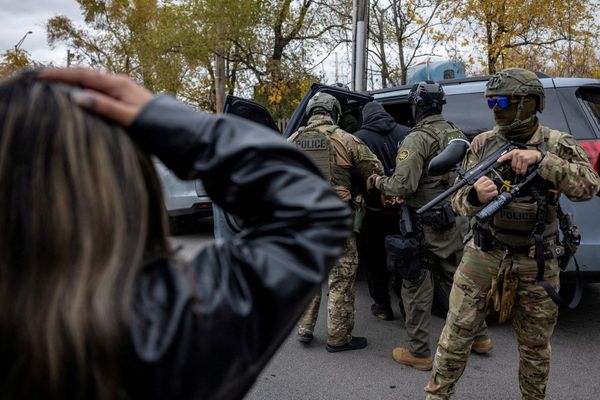A large fire on Arthur’s Seat in Edinburgh was likely started by human activity, fire chiefs have said.
Emergency services were alerted to the blaze just after 4pm on Sunday, as smoke billowed into the sky from the extinct volcano in Holyrood Park.
Fire crews worked throughout the night and into Monday afternoon to control the fire, which spread quickly through gorse and heather on the steep hillside.
Although the cause of the blaze is still unknown, it was almost certainly caused by humans, fire chiefs have said.
Scottish Fire and Rescue Service Group Commander Niall MacLennan said: “While we have no indication of the cause of the fire, the majority of fires of this nature are started by human behaviour.
“Responsible human behaviour can significantly lower the chance of a fire starting.
“It’s vital to follow all safety advice when outdoors and to make sure you are familiar with the Scottish Outdoor Access Code at all times.”
A frightened eyewitness said he watched as the flames spread while he made his way down Arthur’s Seat.
Nick Brice, from Brighton, told BBC Scotland News: "We could see this little plume of smoke on the ridge at the far side, and it just got bigger and bigger.
"All of a sudden we could see these flames starting to come up and people noticed it spreading fast.”

One Edinburgh resident said the fire was “pretty scary” and one of the worst she had seen. Nim Byron told the Independent: “It shows how dry it has actually been in Scotland this summer, this is not normal, as Scotland is famously a very wet place.”
Dr Rory Hadden, Rushbrook senior lecturer in fire investigation at the University of Edinburgh, said wildfires are becoming more frequent due to land use and climate change.
Dr Hadden said: “Wildfires in and around Arthur’s Seat in Edinburgh occur relatively often. Like this one, these typically burn relatively small areas (compared to other wildfires in Scotland) but can have relatively large impacts due to the location and proximity to people – the plume of smoke can exacerbate respiratory conditions as well as the direct danger to those on the hill.

“It has been very dry in Edinburgh this year. This means that vegetation – particularly dead growth from previous years – is very dry. The weather in Edinburgh has been reasonably good recently (sunny and warm) but with quite strong winds.
“This all acts to dry out even more of the dead vegetation, making it easy to ignite – and once ignited, for the fire to spread rapidly. Especially on the steep terrain of Arthur’s Seat.”
It comes after Scotland had the driest spring on record since 1964, it had a deficit of 60m litres a day during droughts. Earlier in July, parts of the north of the country were hit by wildfires.
Alex Salmond did not read independence white paper, Nicola Sturgeon claims
Firefighters remain at scene of Arthur’s Seat blaze
Arthur’s Seat fire live: Human activity ‘almost certainly’ the cause of blaze
Nicola Sturgeon says she still misses Alex Salmond
‘Remarkable’ pancreatic cancer jab offers longer survival hope for patients
JD Vance’s holiday brings ‘circus’ of police patrols to sleepy Cotswolds village







